Get PeakVisor App
Sign In
Search by GPS coordinates
- Latitude
- ° ' ''
- Longitude
- ° ' ''
- Units of Length
- Temperature

Yes
Cancel
Share ×

Scan the QR code and open PeakVisor on your phone
❤ Wishlist ×
Choose
Delete
Grand Targhee Ski Resort is the second-biggest of 13 ski resorts in the great cowboy state of Wyoming, US, after the Jackson Hole Mountain Resort (JHMR). It is located in the iconic Teton Range, a subrange of the Western Rocky Mountains at an altitude between 9,862 ft (3,005 m) and 7,851 ft (2,392 m) with 2,270 ft (691 m) of vertical drop. The main features of this resort are limitless bowl skiing, big snowstorms, and uncrowded slopes. The unobstructed views of the Tetons from the top of the lifts are stunning. Targhee boasts 93 runs over 21.7 mi (35 km) or 2,602 skiable acres (10.5 sq km), although much of the skiing is off-piste and there are limitless variations through the bowls and trees. The majority of the terrain is intermediate, making Grand Targhee a great resort for families. There are 6 ski lifts, which will bring you to the slopes and back. The Grand Targhee Ski Resort season lasts from mid-November to mid-April.
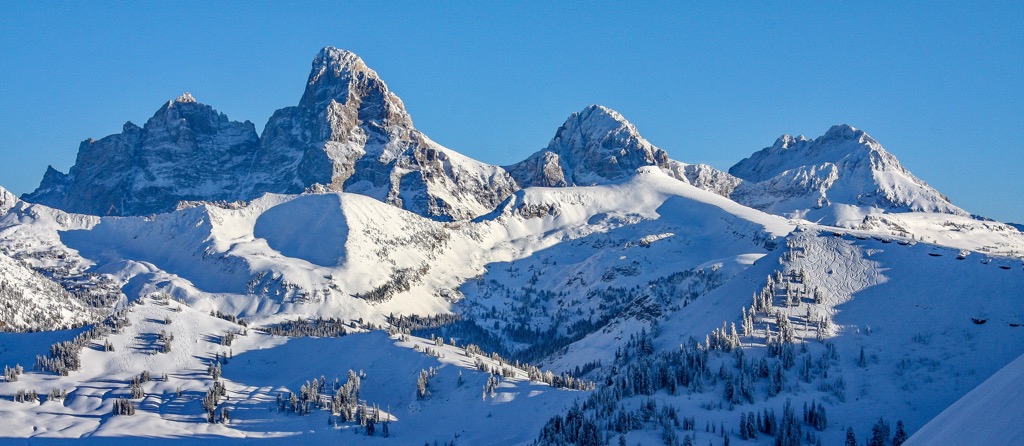
Grand Targhee Ski Resort is located on the western side of the Teton Range, a subrange of the Western Rocky Mountains.
The resort’s slopes are also entirely within the boundary of the serene Caribou-Targhee National Forest. The Grand Teton National Park is also visible just to the east of the resort. From Targhee, you can easily pick out Mount Owen (12,881 ft / 3,926 m), Grand Teton (13,1776 ft / 4,198 m), Middle Teton (12,805 ft / 3,902 m), and South Teton (12,513 ft / 3,813 m).
Administratively, the resort is located in Teton County, Wyoming. Don’t confuse it with the namesake Teton County in Montana and especially with Teton Country in Idaho, because Grand Targhee is just a few minutes from its border. Another thing about Idaho is that the resort is technically in the town of Alta, Wyoming, however, the nearest town is Driggs, Idaho. Driggs is a lovely town with a friendly, western vibe. There is a small assortment of lodging and restaurants and the resort is only 20 minutes away by car or bus. The nearest large city is Salt Lake City, Utah, but it’s a four-hour drive to the south.
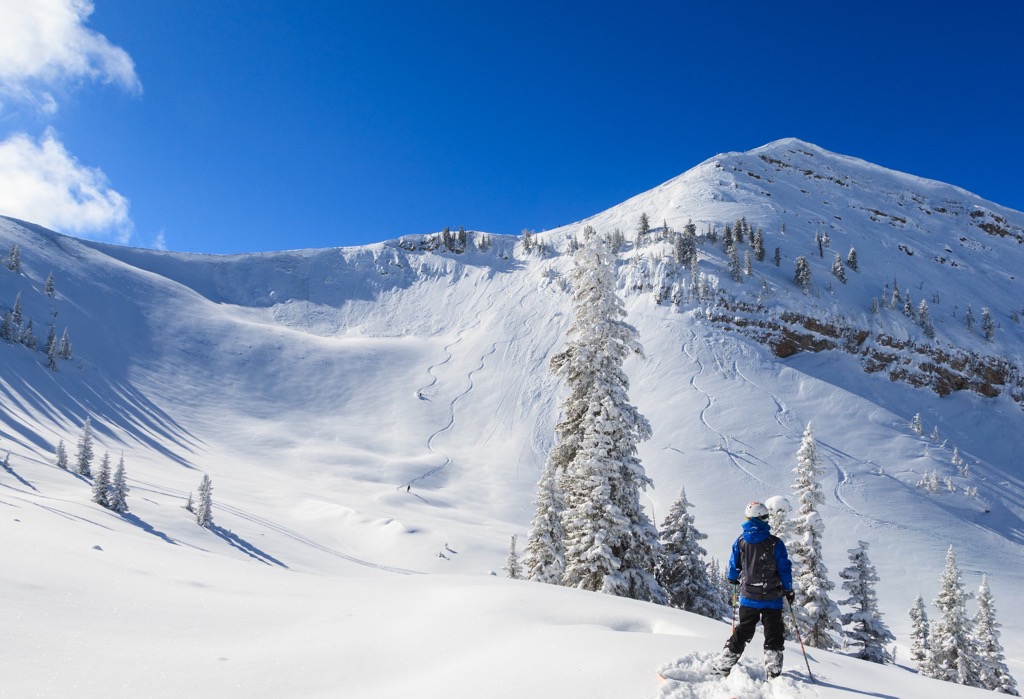
When you drive out of the mountains and into Driggs, you have entered the heart of Teton Valley. The Tetons and Caribou-Targhee National Forest surround this picturesque valley on three sides. Victor is another adorable town within Teton Valley at the base of Teton Pass (8,431 ft / 2,570 m), just to the south of Driggs.
Grand Targhee is relatively simple and easy to get to in three main ways: by plane and public transportation, or by your own or rented car.
The easiest way to fly to Grand Targhee is probably Jackson Hole Airport (JAC). Despite its population of only 10,700, Jackson is an important economic hub and hosts the busiest commercial airport in Wyoming. In fact, Jackson has one of the best ski resort airports in the world. It’s easy to find flights to Jackson — there are non-stop options from 13 cities across the US, including every region of the country.
Once you’ve arrived at the airport, it’s just an hour to Grand Targhee. You must travel over Teton Pass, which can be difficult or impossible during snowstorms. Depending on where you end up staying, your lodging may provide transportation from the airport. If they do not, here is a list of transportation options on the Jackson Hole Airport’s site.
Another way to experience Grand Targhee is to get a flight to Salt Lake City (SLC) and drive 4 hours northeast. Flights to Jackson Hole, while convenient, can also be expensive or just booked out. SLC’s airport is a major hub and flights there will be much cheaper. There are also dozens of direct flights from all over the world. Because the weather is less severe, your flight is less likely to get delayed or canceled than in Jackson.
Idaho Falls is another small city just an hour from Targhee, but its airport is only regional and flight options may be marginal, depending on your location. It may not be a desirable option when you factor in renting a car.
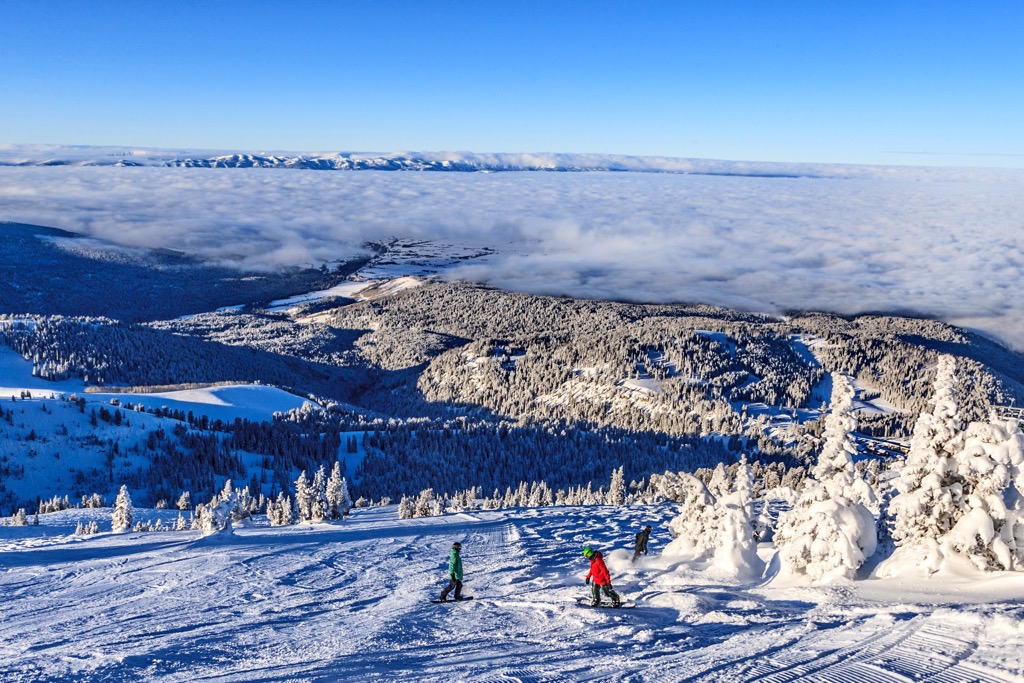
Lastly, Grand Targhee is a decent option for a road trip. It’s not close to anything, but it's also not extraordinarily far away from anything out west. Denver, Salt Lake City, Portland, Boise, and Seattle are all major metropolitan areas within a day’s drive of the resort. Load up your skis and your buddies and make that trip.
It is very important to be aware of road conditions when you are driving to Grand Targhee. Remember, the base elevation at the ‘Ghee, as it is also called, is 1,500 ft (457 m) higher than at Teton Valley or Jackson Hole, so road conditions are likely to be much worse during storms. The access road is steep with many turns and switchbacks — the conditions can get so bad that even shuttle buses occasionally get stuck.
If you decide to drive, you must be prepared with snow tires at a minimum. Chains are highly recommended as well. Four-wheel or all-wheel drive is great if you have it.
There is an abundance of free parking in Grand Targhee. However, the closest lot consists mostly of paid spots ($20), so you will have to walk a bit. There are four additional lots. They generally do not fill up outside of holiday weekends.
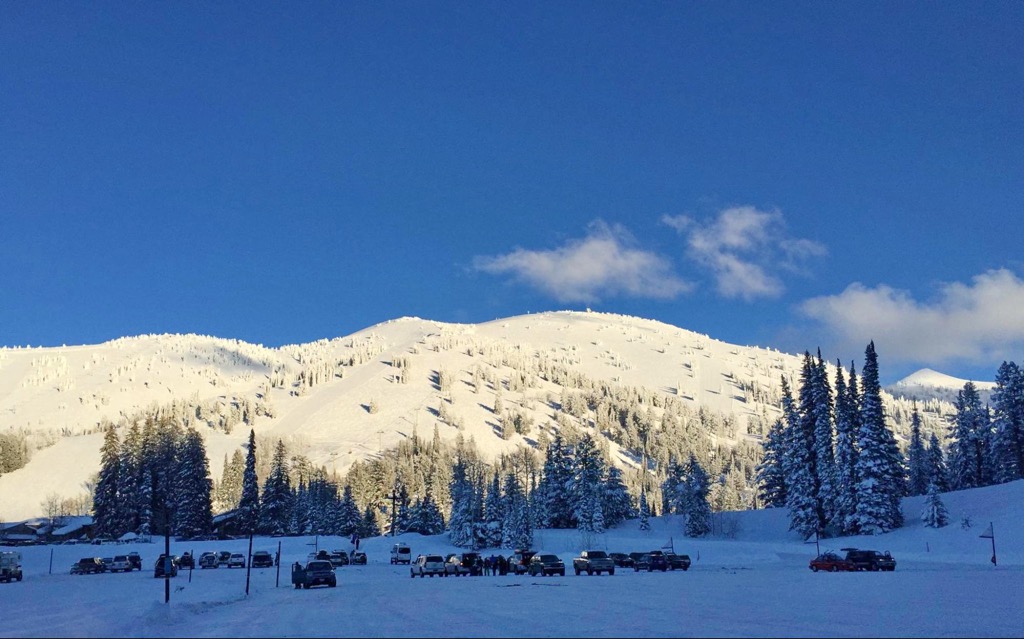
Getting to Grand Targhee by public transportation is also easy. You won’t have to worry too much about crowds or traffic. It is represented by a shuttle that runs regularly. If you’re staying in the ski-in/ski-out lodging at the base area, you won’t need to drive anywhere!
If you are staying in towns of Victor, Driggs or Alta, or anywhere else along the resort access road, there is free easy transportation using the Teton Valley Bus Service. The shuttle drops you off right at the slopes so you don’t have to walk far with your gear.
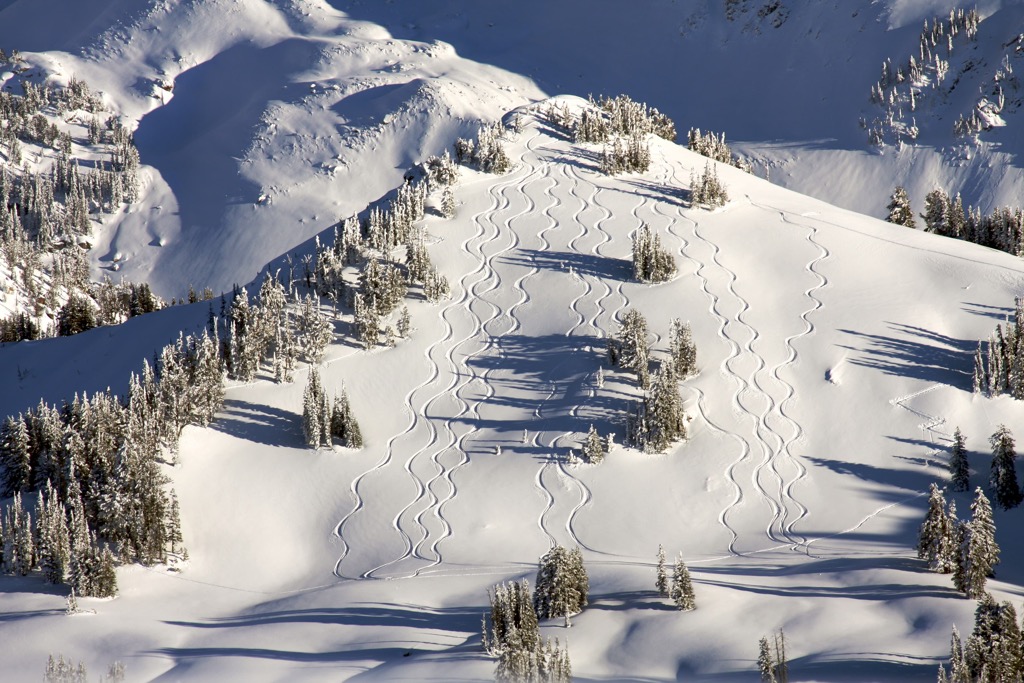
Grand Targhee Ski Resort is one of the snowiest in the US. The resort is undoubtedly in a geographically ideal location for snowfall. The vertical orientation of the Teton Range efficiently captures moisture from a predominantly west-to-east flow of weather. The narrow character of the range means the skiable terrain stretches from the crest of the range to the valley floor, hence the massive vertical drop. However, the Tetons are the only range in the Rocky Mountains that receive truly coastal amounts of moisture.
The secret is a geographically low-lying moisture channel comprising two main features: 1. A break in the coast range between Mount Shasta (14,176 ft / 4,321 m ) and the rest of the Cascades, and the Snake River Valley in Idaho. Storms funnel their way up this valley and collide with the Tetons. The range, with its vertical orientation and massive prominence, causes moist air to rise and condense into precipitation which falls as snow.
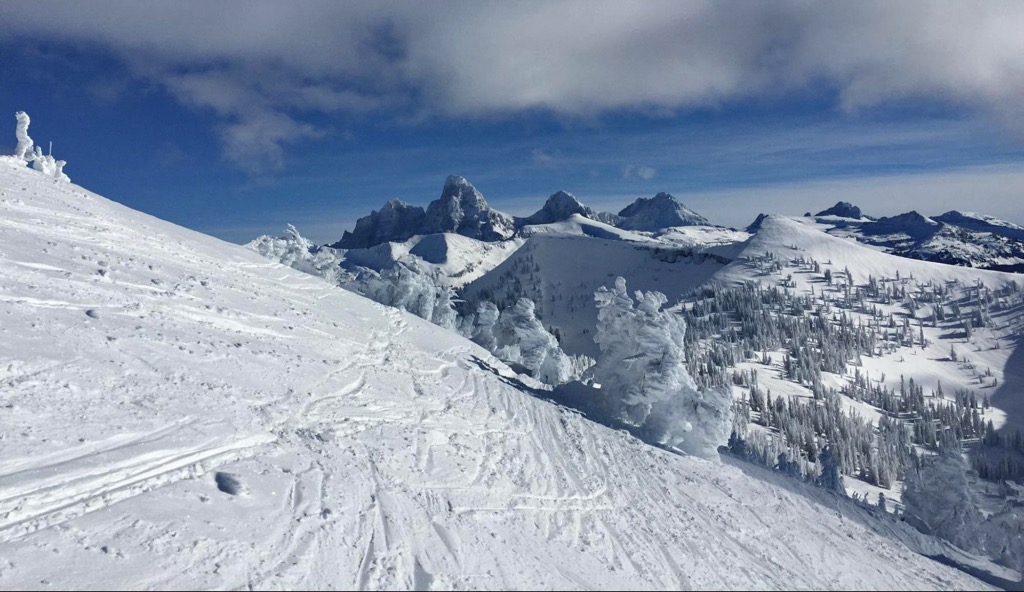
Big storms regularly buffet this region. The Tetons are known for high winds, low visibility, and frostbite-inducing temperatures. When the storms finally break, the weather can be stunning. Low humidity, abundant sunshine, and perfectly crisp temperatures can make for memorable skiing.
The combination of favorable factors produces an average of 500 in (12.7 m) of snow per season. The depth of the snowpack here is rivaled only by coastal mountains. Fortunately, Grand Targhee usually receives better quality snow than the wet, heavy stuff that dumps on the coast range.
The quality of snow here is generally somewhere between Colorado and California. Storms from the northwest tend to produce higher-quality snow than storms from the southwest. The wind is also a factor: When winds are too strong, they compact the snowflakes together and create a dense, creamy surface. In my experience, the sheer quantity of powder and powder days makes up for any inconsistencies in the snow quality.
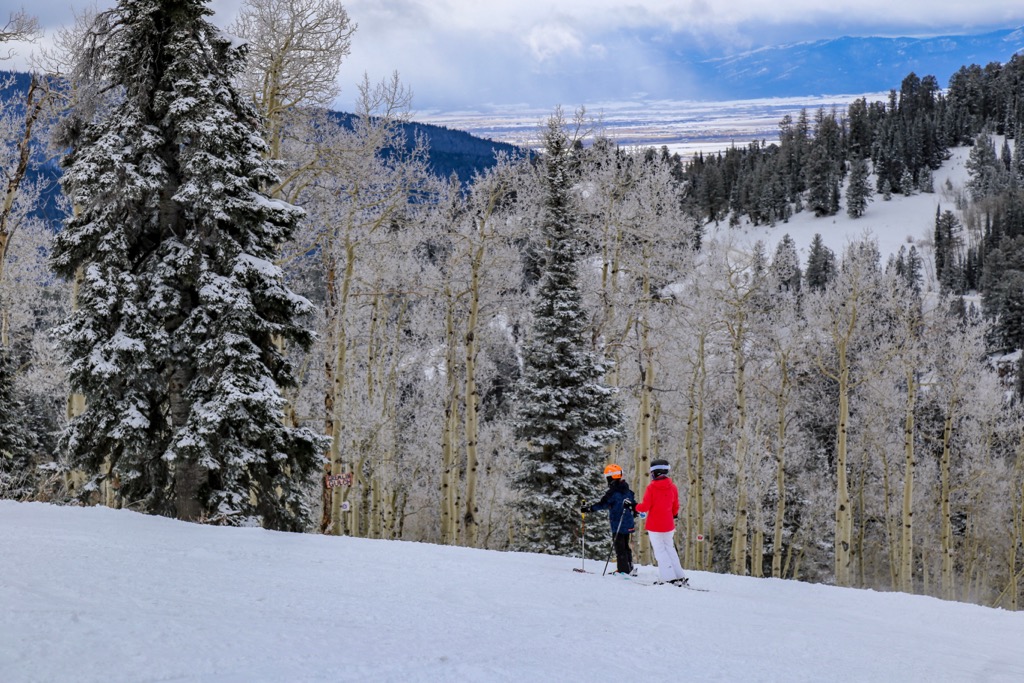
Naturally, there are also some disadvantages regarding Grand Targhee’s location. The most important one is visibility — or the lack thereof. Because the resort is on the windward side of all this moisture, Targhee is often shrouded in fog, so the resort is also nicknamed “Grand Foggy.” The combination of fog and alpine terrain results in vertigo-inducing flat light on certain days.
Sometimes it can be foggy in Teton Valley but sunny up on the mountain, or vice-versa. However, there is no need to be surprised by the conditions when you arrive at the mountain. Targhee has three live Webcams so you can watch the snow stack up all night before you hit the slopes. On the resorts, site, you can also consult the snow report for details on snow conditions, current weather, lift and trail openings, and the forecast.
Grand Targhee Ski Resort is open from mid-November to mid-April each season. For example, the 2022–2023 season is November 18th — April 16th.
The Grand Targhee is a medium-sized ski resort, so it's easy to figure out. It covers three peaks: Fred’s Mountain (9,875 ft / 3,010 m), Peaked Mountain (9,830 ft / 2,996 m), and Mary’s Nipple (9,920 ft / 3,023 m).
Among these three peaks, Fred’s Mountain is the main ski terrain at the ‘Ghee, with its Dreamcatcher chair starting at the base of the mountain. When you look up from the base village, you see Fred’s above you — if you can see through all the snow and fog. Peaked Mountain is the second most popular area for skiing at Targhee.
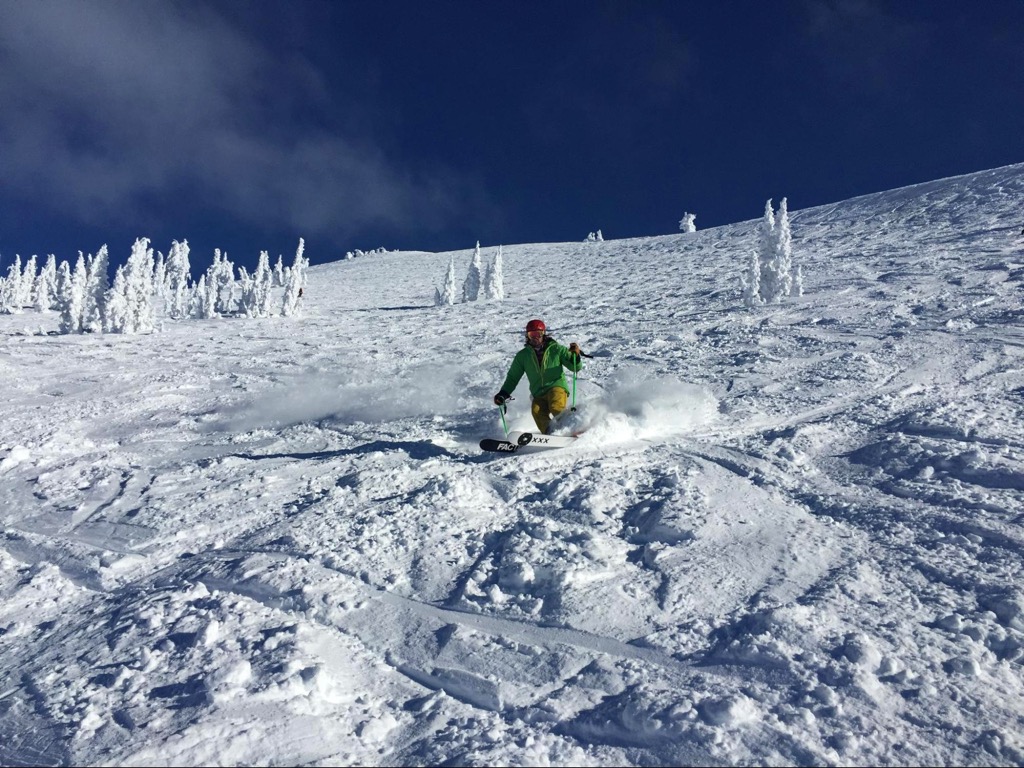
So, let's explore the two main ski areas of the resort in detail:
Off the top of Fred’s Mountain, it’s all open bowls and faces that seem to be the size of football fields. The snow ghosts in between don’t offer much in the way of contrast. The locals here are legendary in their ability to navigate through the pea soup fog, but the mere mortals amongst us (everybody else) will be feeling their way around with their feet. I call it “skiing with Braille”. On these days, and there are many at Grand Targhee, it’s best to stick to the trees.
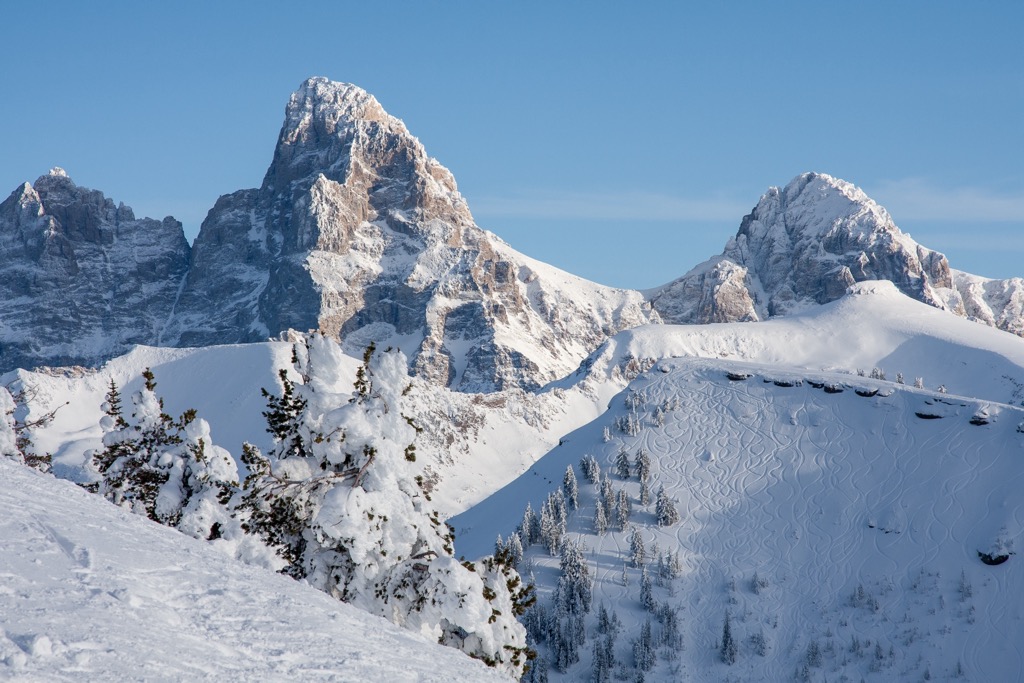
The glades off the Blackfoot Traverse are accessed via the Blackfoot Chair. There are some fun shots here that tend to hold fresh tracks longer than Dreamcatcher. The farther you venture down the Traverse, the fewer tracks you will encounter — but the shorter the run will be. The bottom of Dreamcatcher also has great tree skiing, but you have to navigate some whiteout up top before you can find your way down there. It really takes time and knowledge of the mountain to get this dance dialed in.
Mary’s Nipple is reached via a short, 200 ft (61 m) vertical hike from the Dreamcatcher Chair, and gives you access to backcountry gates as well as a steep but short inbound shot.
The Sacajawea Chair serves as an access point to some intermediate skiing amongst the trees — this terrain is great for low visibility days. It’s also used to access the brand new (for January 2023) Colter Lift on Peaked Mountain.
Sacajawea also accesses some of the only steeper terrain at Targhee, the band of cliffs and chutes coming down the ridge toward the bottom of Mary’s Nipple. You’ll see what I’m talking about on the first sunny day you’re at Targhee — this is where they filmed some of the early Teton Gravity Research (TGR) cliff drops back in the 90s.
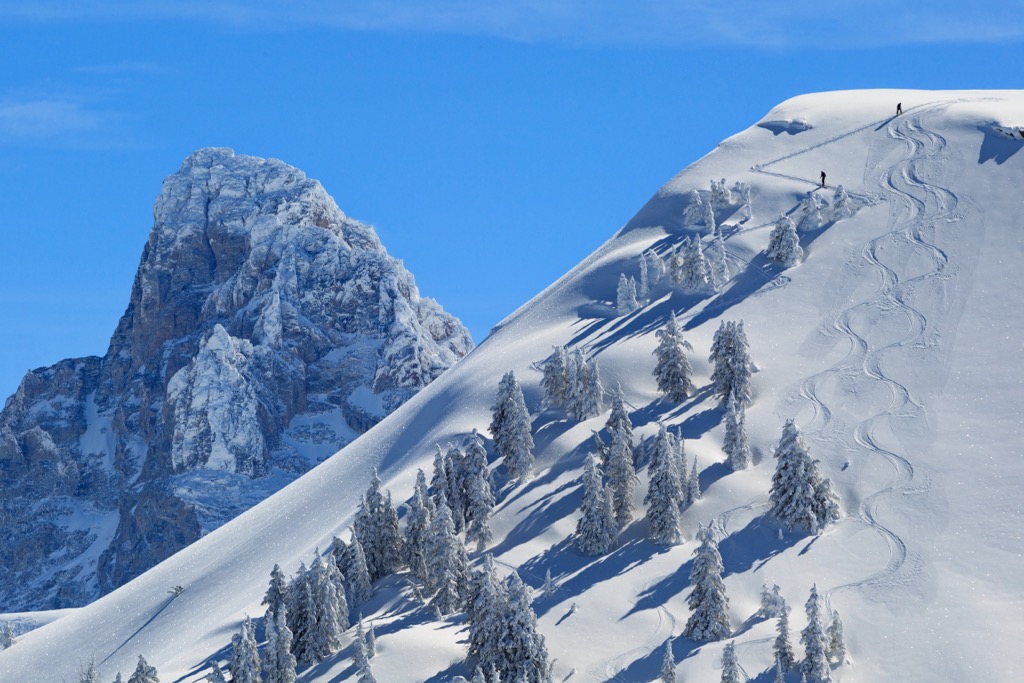
The Colter terrain used to be cat skiing or hike-to access only. Targhee has abolished the cat operation and opened up this area for the masses. It’s a great mix of bowls, faces, and naturally spaced trees with a steeper pitch than many other parts of the mountain. Like Sacajawea, the visibility here is also better than Dreamcatcher so make your way over to this side of the mountain if it's foggy or storming. Everything takes you back to a traverse and then it’s right back to the lift for another lap.
The new Cotler Lift is a high-speed 6-person chairlift that will boost you up the mountain before you know it. The lift will be open in January 2023 (or rather it is opened, by the time you read this guide), and I already know it is going to change the entire character of the resort. This terrain was always some of the best on the mountain if you like it a bit steeper. Plus it was always hike-to only and it would be closed most of the time. With the lift access, there is going to be a whole new zone that will be worthy of spending the majority of your day. Before, I generally stuck to Fred’s Mountain and the Dreamcatcher and Blackfoot chairs, but now I would choose to hang at Colter.
With the big lift, I doubt lift lines will be an issue here. Sometimes Dreamcatcher will have a bit of a line built on powder days, but Targhee is not known for its long lift queues. If you want to see some lift lines, go to JHMR on a holiday weekend. “Soul crushing” are the two words I would use to describe it.
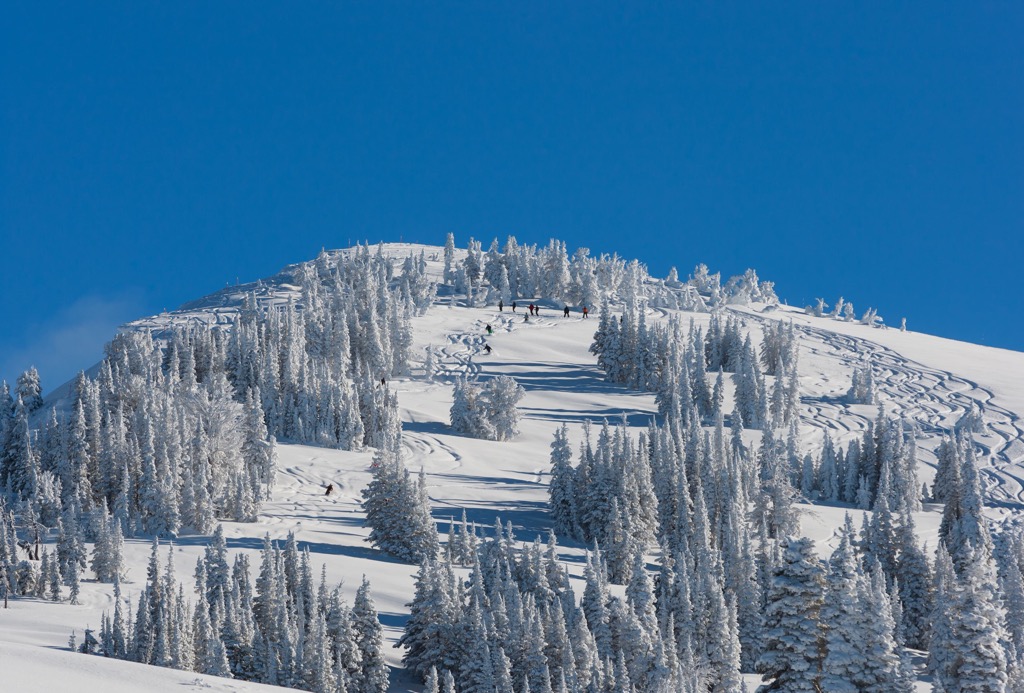
With just 6 lifts, the Grand Targhee Ski Resort boasts more skiable terrain than many other resorts in the US with more lifts. Nearly every inch of this mountain is skiable. This is also one of the best county’s resorts for folks who like to ski off-piste but who want to keep the angle mellow. But on the best powder days, the terrain here is fun for intermediates and experts alike.
There is a whole lift dedicated to beginners — the Shoshone Chair — that will serve those who haven’t skied much in their lives. However, the pistes coming off Dreamcatcher are approachable and most folks who have been skiing a few times will be able to explore from the top of the mountain. For example, the Teton Visa Trail is a green that snakes its way down from the summit.
During your trip to Targhee, you’ll probably also see the so-called “Snow Ghosts.” The top of the mountain gets so caked with snow and rime ice that the trees become enshrouded in snow for the whole winter. It’s impressive they’re able to survive through it all.
Speaking about the slopes, there are 93 runs over 21.7 mi (35 km) or 2,602 skiable acres. The terrain here is mostly intermediate off-piste, with wide open bowls and sparse trees.
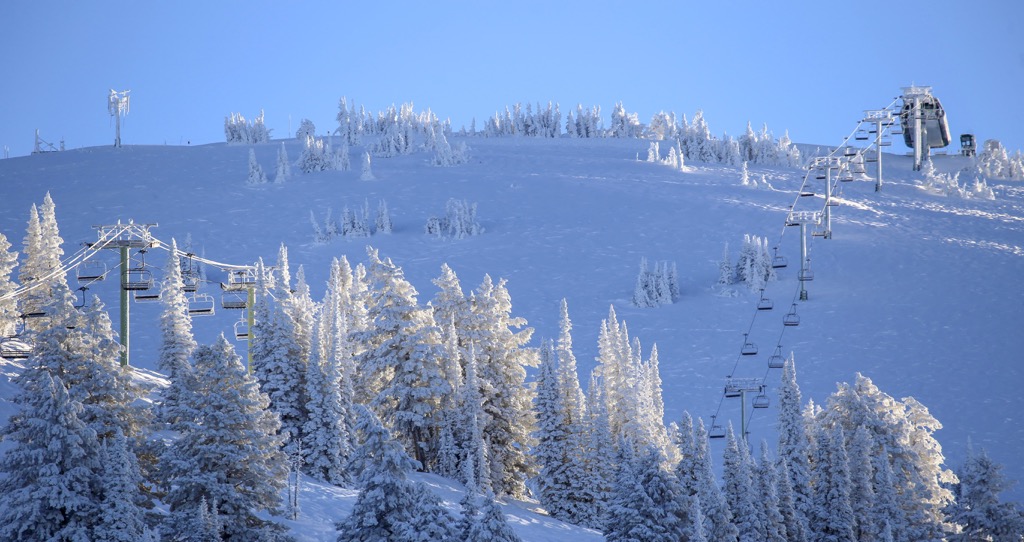
Here’s a ski lifts and slopes summary of the Grand Targhee:
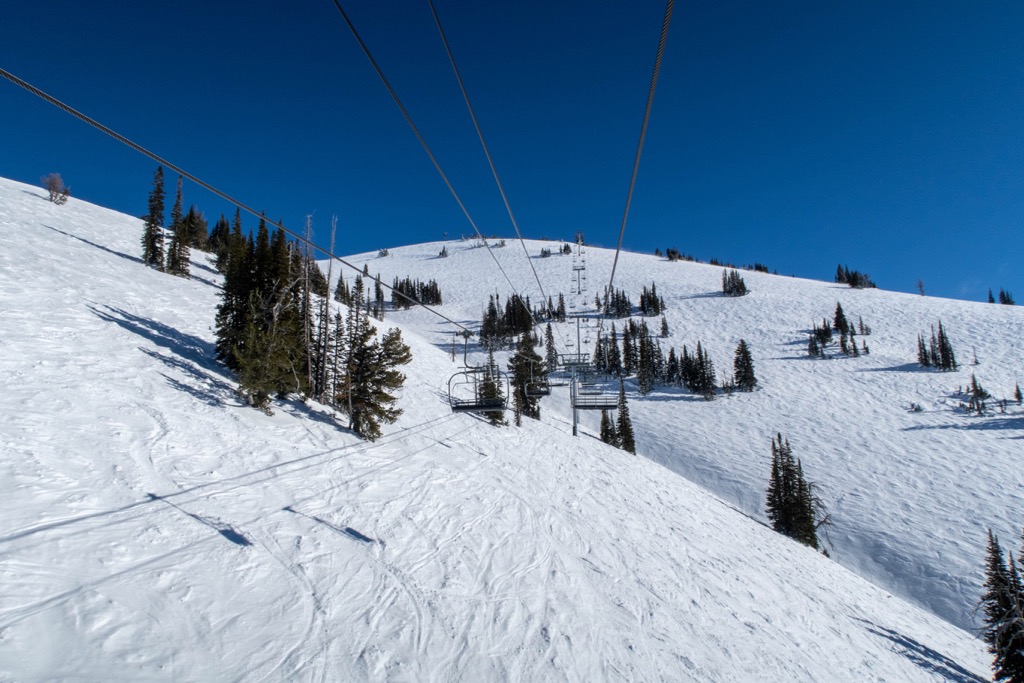
The Tetons are a world-famous destination for Backcountry skiing. However, most of the routes are accessible from the Jackson Hole side rather than the Teton Valley side. However, the routes on the Western (Teton Valley) side have a remote character that you may have trouble finding on the eastern side. But before we deal with the main areas for backcountry skiing at Grand Targhee Ski Resort, I’d like to tell you about two major hazards: avalanches and tree wells.
The first ones happen here regularly. Obviously, don’t go out if you don’t have any knowledge or gear pertaining to avalanches. You can check the forecast at Bridger Teton Avalanche Center.
Tree wells are also scary, and they are a hazard inbounds as well. Many folks are not aware of the hazards posed by tree wells because they are not common in most parts of the world. They mostly form in the big coastal snowpack zones in the PNW, but they can theoretically exist anywhere with big snowfall and evergreen trees. Sometimes they will even form in Colorado during a big season.
The large canopy of the evergreen trees blocks snow from accumulating directly under the tree. This forms a large hole, which skiers can fall into if they ski too close to the tree. When a skier falls into a tree well, he or she is susceptible to becoming lodged headfirst in the snow, usually with their skis still on and sometimes stuck in the branches or against the trunk of the tree. Skiers who don’t get rescued in time perish from suffocation. Be aware, ski with a partner, and don’t ski too close to large trees.
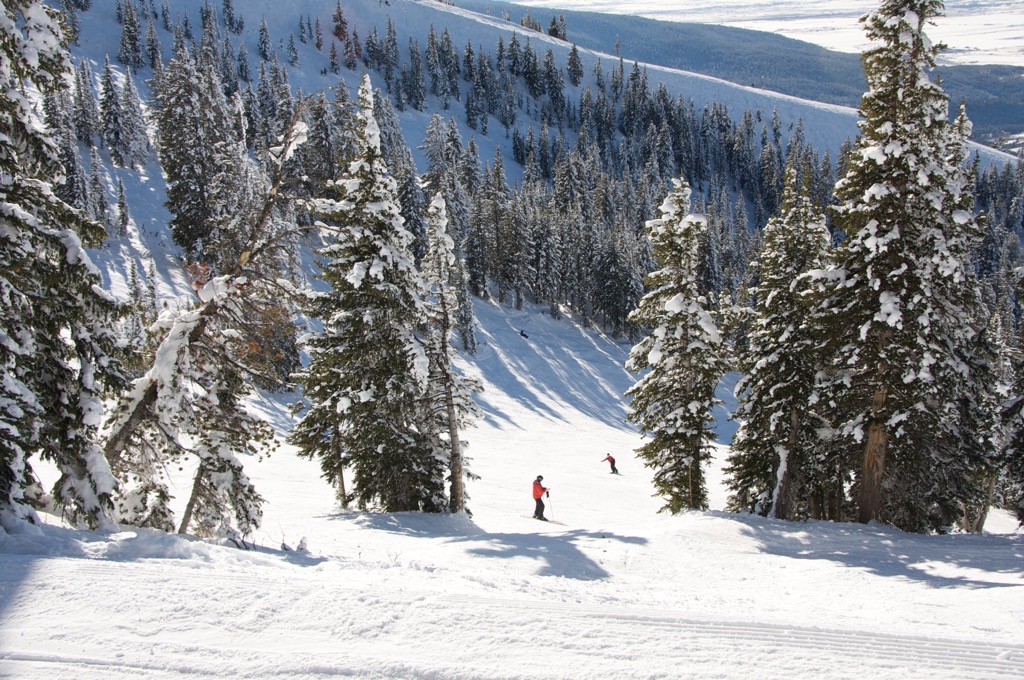
So now let’s deal with the areas for backcountry skiing:
Grand Targhee has an open gate policy at “Scotty’s Gate”, the main backcountry gate located at the base of the Mary’s Nipple hike. There are also three other Backcountry Gates located at different spots around the resort. For example, Scotty’s Gate, named after a couloir on the backside of the resort, is accessible anytime the Dreamcatcher chair is open. However, the other gates are inaccessible when the southern portion of the mountain is closed.
Gate skiing is less popular at Targhee than at JHMR. The terrain behind Targhee is convoluted and riddled with hazards like cliffs and terrain traps. There aren’t any huge fall line descents, and it’s impossible to ski back to the resort. If you decide to drop in back here you will need to take skins. Don’t expect to be able to bootpack out. The snow is usually too deep, rendering this type of travel impossible.
The advantage to the Targhee gates is that, with your skins, you can head deep into the Jedediah Smith Wilderness of the Caribou-Targhee National Forest. You will be much less likely to find other people back here compared to the gates at JHMR. Conversely, a rescue might also be more difficult.
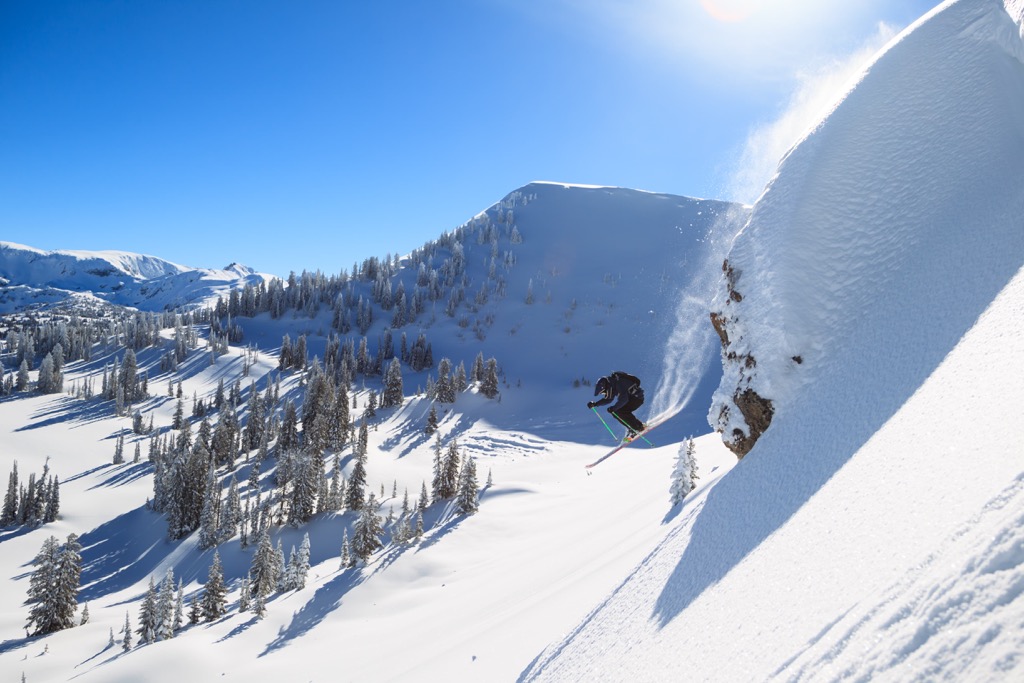
Teton Pass is the most popular backcountry zone in the area around the Tetons. Sometimes it seems like there are more people at the pass than at the resort. It’s easy to understand what all the fuss is about once you experience the quality of the terrain and the efficiency of access. In just an hour, you can bootpack up past the billboard (north side of the road) to Glory Mountain (10,032 ft / 3,058 m) and ski down 2,000 vertical ft (610 m), hitchhiking or shuttling your way back to the top. Watch out for other people, though — one issue with the pass is that folks will be skiing on top of each other. There are also a lot of beginners, and this exacerbates the problem. But beginners have to start somewhere and Teton Pass is as good a place as any.
If you want to strap on the skins, Taylor Mountain (10,341 ft / 3,152 ft) is my favorite proper ski tour on the pass. It’s much less crowded than Glory, but it's also much more of a commitment. The route is on the Teton Valley side of the pass, so it’s less than half an hour from Driggs.
Like other resorts in the US, the Grand Targhee has several types of ski passes that aren't hard to figure out, especially if you've skied elsewhere before:
Day Pass. An adult full-day pass runs $120 for regular days and $135 for holidays. In addition, there is a one-time $5 fee for the RFID card — assuming you don’t lose your card.
Season Pass. If you know you want to come for a couple of weeks or a whole season, the season pass can be as cheap as $899 if you buy it early.
Multi-Resort Pass. Another good option for tourists is to buy either the Ikon Pass or the Mountain Collective Pass.
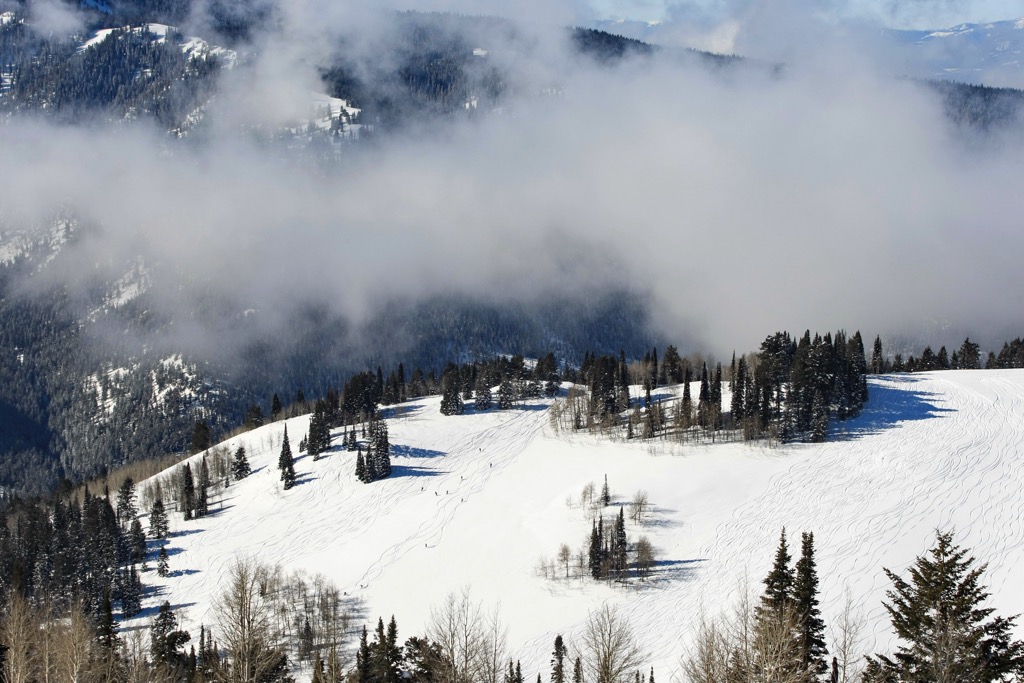
For more information about the ski resort, visit the official Tourist Center of the Teton Valley — a great place to ask questions about the area or check out some local exhibits. The staff here is helpful and will point you toward all of the best local resources, and another nearby one in Jackson Hole:
Teton Geo Center
60 South Main Street, PO Box 1557, Driggs, Idaho, 83422, USA
National Elk Refuge and Jackson Hole Greater Yellowstone Visitor Center
532 N Cache St, Jackson, Wyoming, 83001, USA
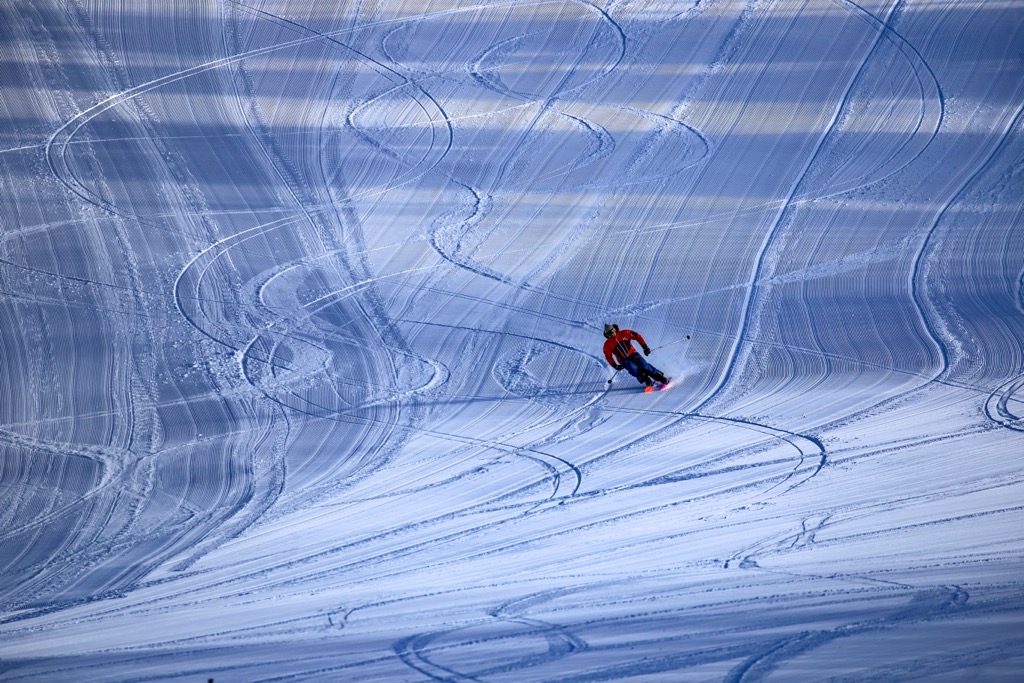
Targhee’s base area is home to two restaurants: the Trap Bar And Grill and the Branding Iron Grill. However, the food here is that sort of soggy, greasy mess you want to avoid if you’re already pushing your body to the limit by skiing and drinking. So I don’t think either of them is very good, so it could be worth it to cruise down into Driggs, as long as the weather is not inclement. Most of you will probably be staying down here anyways — accommodation is fairly limited at the base, and it’s more expensive.
I recommend Tatanka Tavern for great artisanal pizzas. There is also a good beer on tap and the vibe is cozy and fun. Citizen 33 also has good American gastropub food. As I mentioned above, these places are both great for apres as well as dinner.
Teton Thai and Bangkok Kitchen are both of the same Golden Asia group and good if you’re looking for reliable Thai-American food. It’s slightly surprising that Driggs has two Thai restaurants, but I’m not complaining.
For lovers of the classic bistro experience, look no further than Forage Bistro & Lounge. This little joint has the closest thing Driggs offers to fine dining. Forage features a lovely menu sporting locally-sourced meats like buffalo and elk, as well as an excellent wine list.
Visitors to Grand Targhee have about a dozen options for accommodation. As a general rule, the lodging here tends towards rustic and affordable, especially if you’re not staying at Grand Targhee Resort itself.
The resort has five accommodation options: the Teewinot Lodge, the Sioux Lodge, the Targhee Lodge, and the Tower Suite. It’s not pricey compared to, say, neighboring Teton Village (Jackson Hole Mountain Resort), but it’s not cheap. However, you don’t have to drive to the resort which can be tough on stormy days if you don’t have the right kind of vehicle.
Don’t worry I didn’t miscount — there are indeed five options. The last is to stay in the parking lot in your RV for $25 a night. Sounds like a bargain to me!
The access road has several options including everything from the five-star Teton Teepee Lodge to the affordable Teton Hostel Hideaway (one-star).
Lastly, Downtown Driggs has some great motel options coming in for less than $100 for those looking to save some dough. There’s a free shuttle to the resort, and all the fun bars and restaurants are in Driggs anyways. The place has got charm, folks. Plus you’re closer to Jackson if you want to go there for a day. This is a great option at a reasonable price.
Grand Targhee is not a big sprawling resort. This adds to the charm, but it also means that there aren’t tons of options when it comes to anything besides skiing. However, there are a few wonderful establishments that cover all the bases.
If you’re looking to celebrate the day with a few cold ones, the same Trap Bar And Grill right in the base area should have all of your needs covered except for the good food I mentioned above. It gets lively after a (powder) day on the hill, and it’s especially convenient if you're already staying at the resort. They can have great live music as well, and the place can really get going if the right band is in town.
I suggest going into Driggs at least once to check on the scene in this old-school western town. The Trap might suffice for a night or two but not for the whole vacation. For a small town, Driggs has a pretty good selection of cozy spots to throw back beers and eat some tasty food. I recommend the same Citizen 33 and Tatanka Tavern for those just getting off the hill — they’ve both got great beers that you can pair with great food — this is a truly winning après-ski combination.
If you can't get enough riding at the resort (it's relatively small, after all), there are three other resorts nearby, including Jackson Hole, Wyoming's largest:
Jackson Hole Mountain Resort (JHMR) is the world-famous ski resort located just across the Tetons from the ‘Ghee. JHMR is a special place and it is a must-visit if you are on a trip to the ‘Ghee, however, it is very different.
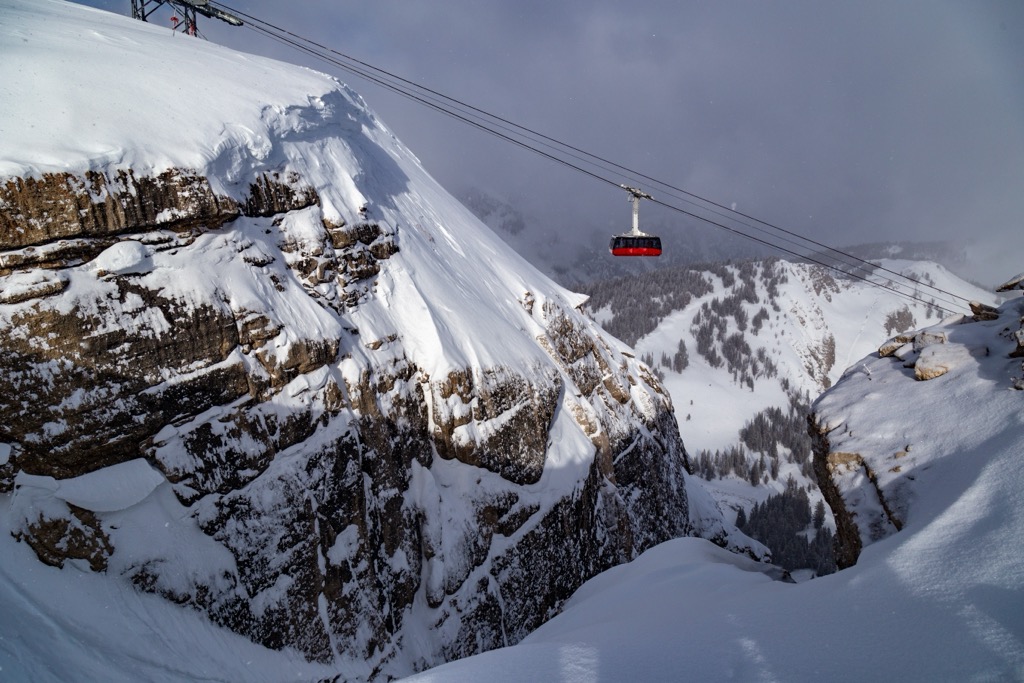
Snow King Mountain is the baby sibling of JHMR located right on the edge of Downtown Jackson. Locals often refer to it as “Town Hill.” It’s not the best ski area and you may not want to visit it during your trip, especially if you’re only in town for a few days. But there are some great things about this small ski area that are worth noting.
Kelly Canyon is a small ski area south of the town of Rexburg. It’s a little over an hour from Driggs and has a very local vibe with none of the trappings of the more glamorous resorts. This place makes the Snow King look like Courchevel (Les Trois Vallées).




